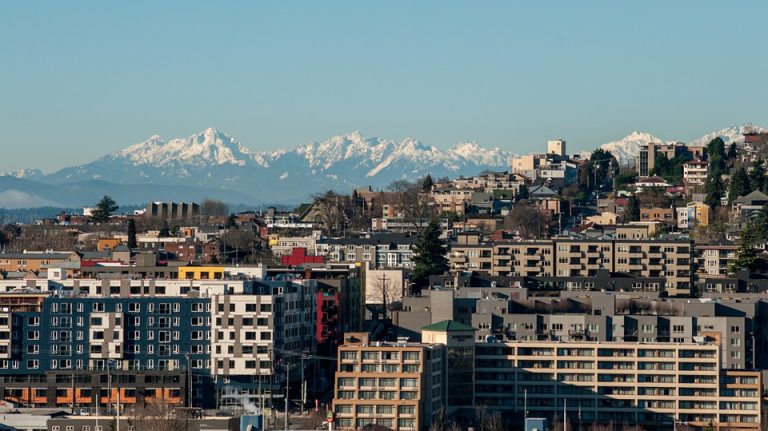Published on March 29, 2022

Not all U.S. major cities are grappling with homelessness at the scale of say, Seattle or San Francisco.
And it’s not because some cities have more people in poverty, or more people in crisis.
Gregg Colburn, assistant professor of real estate at the University of Washington, believes housing market conditions — specifically, high housing and rental prices, and low vacancy rates — exacerbate economic and personal challenges for society’s most vulnerable. And it’s the housing market, aided by the private and public sectors, that can provide the solution.
Colburn’s new book, Homelessness is a Housing Problem, co-authored with data journalist Clayton Aldern, explores the factors that drive homelessness, and the cultural and economic shift that can ultimately benefit all — housed and unhoused.
“We know that there are individual factors that increase the risk of homelessness for individuals, maybe poverty or health issues or substance use. But those factors alone don’t explain the huge problem we have in Seattle, or San Francisco or Los Angeles,” Colburn said. “If we continue to blame individuals for particular outcomes, we’re going to miss the fundamental driver of this crisis — housing market dynamics. We have a gross undersupply of housing at all levels, but certainly of affordable housing. Failure to address that gap will, I think, guarantee that we will continue to struggle with this crisis in perpetuity.”
In 2020, Colburn co-led a study with King County on the use of hotels as temporary housing for people experiencing homelessness during the COVID-19 pandemic. He spoke with UW News about his new book, published March 15 by University of California Press.
What did you learn about the differences among cities?
There are the “big eight” cities for homelessness in the United States: Boston; New York; Washington, D.C.; Seattle; Portland; San Francisco; Los Angeles; and San Diego. Each of these cities have really high rents and low vacancies. While there are people with vulnerabilities in every community around the country, the consequences of vulnerabilities are far more severe in a place where housing costs are very expensive and vacancies are low.
For example, the margin for error in Seattle is very thin: If you get kicked out of your apartment, or get into a fight with your roommate, or lose your job, there are no places to move to, and if there are it might cost $2,000 a month. Now, the margin for error in Detroit — one of the most impoverished cities in the country — is far greater. You can lose a job, you can have an unfortunate event, but you might be able to find an apartment for $500, where vacancy rates are 10%.We have fewer poor people in Seattle than Detroit does on a per capita basis, but we have far more homelessness because the consequences of being poor in Seattle are so much more significant.
Continue reading at UW News.
Originally written by Kim Eckart for UW News.